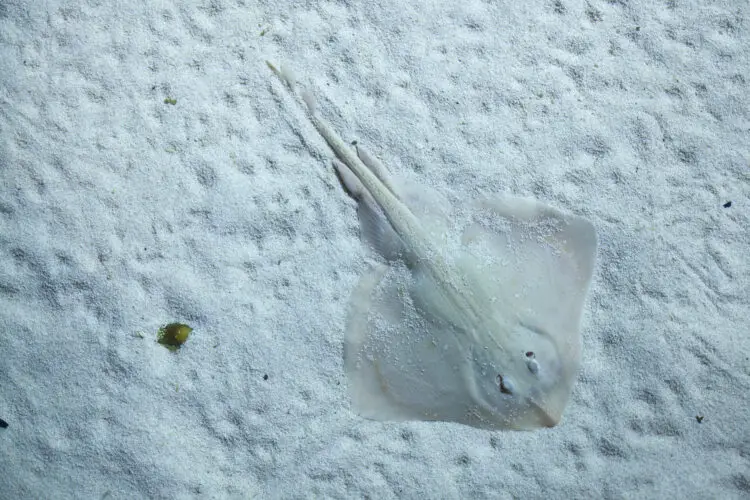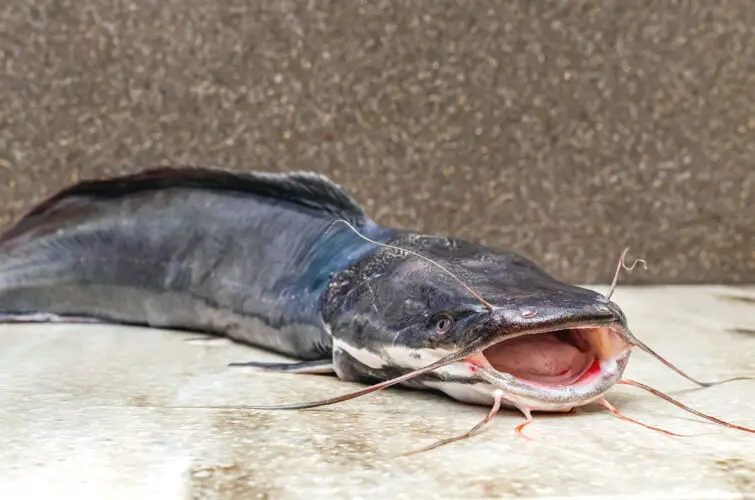Catfish and skate are both fascinating aquatic creatures, but they belong to entirely different families and possess distinct characteristics. Catfish are freshwater fish known for their whisker-like barbels, while skates are cartilaginous fish closely related to rays. Understanding these differences helps one appreciate the uniqueness and adaptations of each species.
Catfish are usually found in a variety of habitats, including rivers and lakes, and are recognized for their smooth, scaleless bodies. They have a varied diet and are known for their bottom-dwelling feeding habits. In contrast, skates inhabit marine environments and are noted for their flattened bodies and wing-like pectoral fins that allow them to glide along the ocean floor.
Both catfish and skates offer distinct ecological benefits and survival strategies, making them important players in their respective ecosystems. Whether you’re an angler, a marine biologist, or simply curious about aquatic life, exploring the differences between these two species can be quite enlightening.
Basic Definitions
Catfish and skate are distinctive creatures with unique biological and physical characteristics. This section defines each, highlighting their features and habitat preferences.
Definition of a Catfish
Catfish are freshwater fish named for their prominent barbels, which resemble a cat’s whiskers. They belong to the order Siluriformes and are found in diverse habitats ranging from streams to coastal waters.
Catfish have smooth, scaleless skin and a variety of body shapes, but most feature a broad, flattened head. Species can vary greatly in size; some are just a few inches long, while others can grow several feet.
Important traits include their benthic feeding behavior and their ability to produce sounds via their swim bladder. Catfish are also notable for their adaptability to various environmental conditions.
Definition of a Skate
Skates are cartilaginous fish closely related to rays, belonging to the family Rajidae. They inhabit marine environments, typically found on the ocean floor from shallow coastal waters to deep-sea trenches.
Skates are characterized by their flattened bodies and wing-like pectoral fins extending from the head to the tail. Unlike rays, they have thick, fleshy tails without stingers.
Skates have a unique form of locomotion, gliding through the water with a graceful, undulating movement. They primarily feed on bottom-dwelling organisms such as mollusks and crustaceans. Their skin is rough due to small, tooth-like structures called dermal denticles.
The reproductive strategy of skates includes laying eggs encased in protective capsules, often called “mermaid’s purses,” which provide a safe environment for developing embryos.
Anatomical Differences
Catfish and skate differ significantly in their physical characteristics. These differences can be observed in their body shape, skeleton structure, and fins and tails.
Body Shape and Appearance

Catfish possess an elongate, cylindrical body shape with a flattened underside. They are typically covered in smooth, scaleless skin. Many species have prominent whisker-like barbels around their mouth used for sensory purposes. Meanwhile, skates have a flattened body that is broad and rhomboidal or diamond-shaped. Their eyes and spiracles (breathing holes) are located on the top surface, while their mouth and gill slits are situated on the underside.
Skeleton Structure
Catfish have a bony skeleton composed primarily of ossified structures. This bony framework provides support and protection. Their vertebral column extends throughout their body, crucial for swimming. On the other hand, skates are cartilaginous fish, meaning their skeletons are made of cartilage rather than bone. This makes them more flexible and lighter. Additionally, skate skeletons have specialized structures like enlarged pectoral girdles supporting their wing-like fins.
Fins and Tails
Catfish exhibit a range of fin types, including a distinct dorsal fin with spines that can be used for defense. They also have pectoral and pelvic fins aiding in maneuverability. Their tails are usually straight and feature a homocercal tail fin. Skates, contrastingly, have large pectoral fins that extend from their head to tail, forming wing-like structures used for gliding along the ocean floor.
Many lack a prominent tail fin, and instead have a caudal region that narrows to a thin, elongated tail.
Habitat and Distribution
Catfish and skates occupy diverse environments. Understanding their natural habitats is essential to appreciate the differences in their ecology and behavior.
Natural Habitats of Catfish
Catfish are primarily found in freshwater environments. Rivers, lakes, and ponds serve as their natural habitats. These fish thrive in slow-moving or standing water. Some species adapt to brackish waters, but this is less common.
Geographical distribution includes regions across the globe, particularly in the Americas, Europe, and Africa. Many catfish prefer muddy or sandy bottoms where they can easily find food.
In tropical and subtropical climates, they flourish due to the warm temperatures. Catfish are also nocturnal, meaning they are more active during night.
Natural Habitats of Skates
Skates inhabit marine environments, dwelling primarily on the ocean floor. They are often found in temperate and cold waters, preferring to stay in coastal and deep-sea habitats.
Geographical distribution covers oceans worldwide, with a higher concentration in the North Atlantic and Pacific Oceans. Skates can be found on sandy, muddy, or rocky seabeds, where they lie flat to avoid predators and ambush prey.
They thrive in benthic zones, ranging from shallow waters to depths of over 2000 meters. Some species are adapted to specific oceanic conditions, including varying salinity and temperature.
Dietary Habits
Catfish and skate have distinct dietary patterns influenced by their habitats and physical characteristics.
Catfish Diet

Catfish are omnivores. They consume a mix of plant matter, insects, crustaceans, and small fish. Their barbels, or whiskers, help them detect food in murky waters. Catfish often feed on the bottom of rivers and lakes, using their sense of smell to locate meals.
They are adaptable and can eat a variety of foods, including algae and decaying organic material. In some environments, catfish might even scavenge on dead fish or small mammals.
In captivity, they can be fed pellets and flakes, but a varied diet is important for their health.
Skate Diet
Skates are carnivores. They primarily feed on invertebrates such as crustaceans and mollusks. Skates use their flat bodies to glide over the sea floor, where they uncover hidden prey. They possess strong jaws to crush the shells of their prey.
Skates also consume small fish and occasionally squid. They have electroreceptors that help them locate prey buried in the sand.
In aquariums, skates are often fed small pieces of fish and shrimp to mimic their natural diet.
These dietary habits enable skates to thrive in benthic environments where food sources are abundant.
Reproductive Behavior
Catfish and skate exhibit distinct reproductive behaviors. These differences include their breeding methods, gestation periods, and egg-laying practices.
Catfish Reproduction
Catfish primarily engage in external fertilization, where the female releases eggs into the water and the male fertilizes them outside her body. During breeding season, catfish seek out suitable nesting sites such as hollow logs, crevices, or man-made structures. Females lay hundreds to thousands of eggs.
Males often guard the nest, protecting the eggs from predators and ensuring their development. The incubation period for catfish eggs is typically between 6 to 10 days, depending on water temperature. Post-hatching, the male may continue to protect the fry for a short period until they are able to fend for themselves.
Skate Reproduction
Skates exhibit oviparous reproduction, meaning they lay eggs rather than giving live birth. Females produce egg cases, often referred to as “mermaid’s purses,” which they deposit onto the ocean floor, attaching them to structures like seaweed or rocks. Each egg case typically contains a single embryo.
The gestation period for skate eggs can vary widely, often lasting several months to over a year. After the eggs hatch, the juvenile skates are fully formed and emerge as miniature versions of the adults. There is no parental care post-hatching, and the young skates are independent from birth.
Conservation Status
Catfish and skate populations face a variety of threats, impacting their numbers and habitats. Each species is affected by unique challenges that need specific conservation efforts.
Threats to Catfish Populations
Catfish populations are under threat due to overfishing and habitat loss. Overfishing occurs both in commercial and recreational sectors. This reduces their numbers significantly.
Pollution also poses a serious threat to catfish. Contaminants from industrial waste, agricultural runoff, and urban development can degrade their aquatic environments. This affects their health and reproduction rates.
Additionally, invasive species can disrupt catfish habitats. These species compete for food and space, adding pressure to native catfish populations. Effective management and conservation strategies are essential to address these challenges.
Threats to Skate Populations
Skate populations suffer primarily from overfishing. They are often caught as bycatch in trawl fisheries. This unintentional capture leads to a decline in skate numbers.
Habitat destruction is another critical issue. Activities like bottom trawling can damage the seafloor habitats where skates live. This destruction reduces their breeding and feeding grounds.
Climate change impacts skate populations as well. Changing ocean temperatures and currents affect their distribution and spawning cycles. Conservation measures focusing on sustainable fishing practices and habitat protection are crucial for skate survival.
Fishing and Human Interaction
Fishing practices differ greatly between catfish and skates, especially in terms of their impact on the ecosystem and economy through methods like commercial fishing.
Commercial Fishing of Skates
Skates are primarily caught for their wings, often marketed as “skate wing” in seafood restaurants. Techniques used include trawling and gillnetting. Bycatch, the unintended capture of non-target species, is a significant issue in skate fishing.
Their population levels can be vulnerable due to slow growth and late maturity. Measures like regulations and quotas aim to protect skate populations and ensure sustainable fishing practices. Some regions have placed strict limits to avoid overfishing, whereas others focus on habitat conservation and fishing gear modifications to reduce bycatch.
Cultural Significance
Catfish and skates hold distinct places in various cultures. These fish influence cuisine, folklore, and economies around the world.
Catfish in Human Culture
Catfish play a significant role in many global cuisines. In the southern United States, they are popular in dishes such as fried catfish or catfish stew. In Asia, catfish are integral in Thai and Vietnamese recipes, featuring prominently in soups and curries.
Folklore and mythology also feature catfish. In Japanese culture, the Namazu is a giant catfish believed to cause earthquakes. This myth links the animal to significant natural events.
Economic importance cannot be overlooked. Catfish farming is extensive, particularly in the U.S. and Southeast Asia. This industry provides employment and supports local economies, making catfish vital beyond just culinary and cultural aspects.
Skates in Human Culture
Skates are less commonly featured in cuisine compared to catfish. However, they are used in specific dishes in regions such as Korea and parts of Europe. In Korea, fermented skate, known as hongeo, is a traditional delicacy with a unique, strong flavor.
Skates also impact marine folklore. For instance, in Celtic traditions, skates have appeared in tales describing sea creatures and mysterious underwater phenomena. They symbolize both awe and mystery.
From an environmental perspective, skates are studied extensively. Their decline in various regions raises concerns about marine biodiversity. Protection efforts are in place to ensure their populations remain stable. Thus, skates hold not only culinary and mythological significance but also ecological importance.











